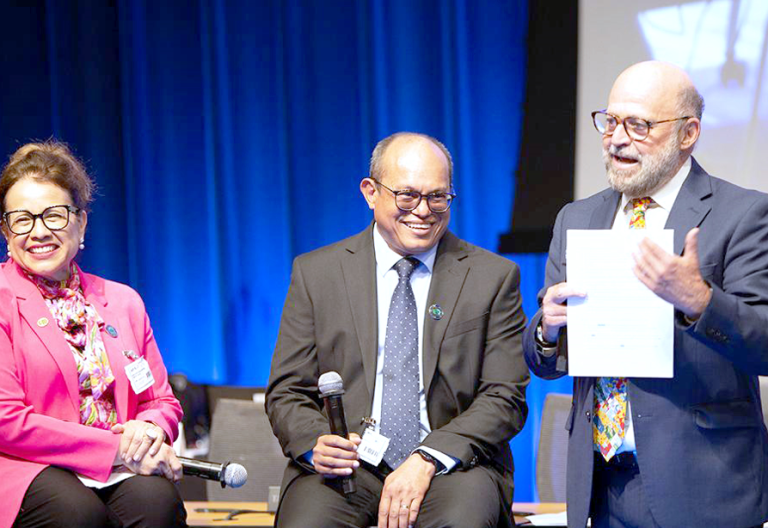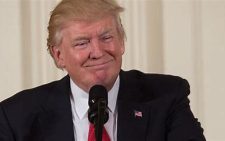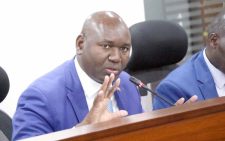GEF to disburse Ksh33.7B to help environmental action

Representatives of 186 member countries are currently meeting at the 69th Session of the Global Environment Facility (GEF) Council to consider wide-ranging support and to disburse US$261 million for innovative initiatives worldwide.
The GEF Council meeting in Washington DC marks the official launch of the GEF Trust Fund’s ninth replenishment (GEF-9), which will start next month and run through June 2030, with timing aligned to multiple environmental goals.
GEF member countries are considering funding a broad work programme that includes support for innovative efforts to propel biodiversity conservation, pollution remediation, and locally-led environmental action, with key 2030 goals in sight.
A total of US$261 million is proposed for programming across the family of funds, including US$195 million from the GEF Trust Fund, US$40 million from the Least Developed Countries Fund (LDCF), and US$26 million from the Global Biodiversity Framework Fund (GBFF). Each dollar of the GEF funding from this set of projects is set to mobilise as much as US$13 in co-financing from other sources, for a total of US$2.6 billion.
Members will review progress on global environmental goals and hear from the heads of the multilateral environmental conventions that the GEF serves, as well as from the Independent Evaluation Office (IEO) and Scientific and Technical Advisory Panel.
The Council meetings follow last month’s start of the GEF-9 replenishment process, when donor countries and partners gathered in Paris to discuss priorities and ambitions for the multilateral trust fund’s next four-year funding cycle that will stretch to June 2030.
Much of the GEF’s US$5.3 billion eight replenishment has already been programmed, as a result of faster and more efficient review processes instituted as part of recent institutional reforms.
The initiatives to be considered for US$195 million in funding by the GEF Council include efforts to remove toxins from cosmetic products and industrial processes, support collaboration across international water ways, and propel a variety of locally-led environmental efforts, including through microfinance.
Government representatives will consider US$40 million in funding from the Least Developed Countries Fund for planned projects in the Solomon Islands and Uganda, as well as one regional programme in the Sahel countries, with a focus on Mali and Chad.
The LCDF-funded initiatives aim to enhance landscape and seascape resilience, support climate-smart agriculture, restore threatened landscapes, and promote sustainable livelihoods in vulnerable rural areas.
Together, these initiatives reflect the GEF’s commitment to advancing locally-led solutions that protect ecosystems, improve livelihoods, and build long-term resilience in least developed countries.
The GBFF Council will consider providing US$26 million for projects that support biodiversity and community well-being in Peru, the Democratic Republic of the Congo (DRC), and in the Sangha Trinational – a forest divided between the Central African Republic, Cameroon and Congo Brazzaville.
Council members will also review progress made over the GBFF’s first year, and discuss the IEO’s first assessment of the innovative fund, which was created in record time in response to support implementation of the Kunming-Montreal Global Biodiversity Framework.
To date, the GBFF has provided US$202 million for 40 projects in 41 countries, including nine small island developing states (SIDS) and 13 least developed countries (LDCs). GBFF projects are currently underway in Brazil, Gabon and Mexico.
In the first meetings of the GEF-9 replenishment process, representatives of donor countries and partner organisations stressed the need to ensure a high level of ambition in the upcoming funding period, with a strong focus on efficiency, equity, versatility and accessibility.
“The global environmental crisis is intensifying, but we can change this course” said GEF CEO and Chairperson Carlos Manuel Rodriguez, “The next four years are make-or-break for 2030 global biodiversity and other targets, and strong support for GEF-9 will be vital to help achieve them. We’ve seen good progress in Paris in this regard”.
The next formal replenishment meeting is scheduled to be held from October 8 to 10 in Botswana. A final decision about the size and ambition of the GEF-9 funding envelope is expected to be taken in 2026.
Executive secretaries and senior representatives of seven multilateral environmental agreement (MEA) secretariats held an interactive dialogue with the 69th meeting of the GEF Council. Council co-chair Rodriguez welcomed the leaders as speakers emphasised the need for integrated action and collaboration.
Examining achievements
UN Convention to Combat Desertification (UNCCD) Secretariat’s Louise Baker said financing pledges announced during UNCCD COP16 in Riyadh, Saudi Arabia can be leveraged to address drought, adding that COP17 in 2026 will focus on rangelands, livestock, and their social and economic benefits.
UN Framework Convention on Climate Change (UNFCCC) Executive Secretary Simon Stiell said the Standing Committee on Finance is examining lessons from the achievements of the US$100 billion climate finance goal to inform efforts to deliver the new collective quantified goal of US$300 billion and to scale up to US$1.3 trillion. He noted the value of coordination among funding mechanisms.
Convention on Biological Diversity Secretariat’s Yibin Xiang, said COP16 in Cali, Colombia, will be remembered as a high-level pledging conference orchestrated by the GEF team for the Global Biodiversity Framework Fund. He said ‘COP16.2’ in Rome, Italy, delivered a monitoring framework that will be used by both the CBD and GEF.
Minamata Convention Executive Secretary Monika Stankiewicz said the GEF Secretariat has insight into multiple MEAs, which she said is unique among funding mechanisms. She noted the value of GEF programming and engagement with countries in support of the 2025 phase-out of certain uses of mercury.
UN Division for Ocean Affairs and the Law of the Sea Director Vladimir Jares reported on the status of ratifications for the agreement on Marine Biological Diversity of Areas Beyond National Jurisdiction (BBNJ Agreement). He highlighted 28 ratifications that have been submitted to date, with more expected to be announced during the upcoming UN Ocean Conference in Nice, France.
Convention on International Trade in Endangered Species of Wild Fauna and Flora (CITES) Secretary-General Ivonne Higuero, said although CITES is not served by the GEF, it still benefits from GEF-funded projects. She cited the GEF Global Wildlife Programme, which contains elements relevant to CITES implementation, and called for GEF-9 to focus on integration projects with co-benefits for multiple multilateral agreements.
Council members welcomed the GEF’s cooperation with the MEA representatives on the impact of GEF-funded projects in achieving MEA implementation.
The case of the Biodiversity Finance Initiative (BIOFIN) was highlighted as one of GEF’s success stories. UNDP Head of the Biodiversity Finance Portfolio Onno van den Heuvel, described BIOFIN’s work in supporting countries to develop and implement strategies for biodiversity finance. He described the GEF’s support for the design and implementation of biodiversity finance plans in 91 countries to close the “biodiversity finance gap”.
Members considered a proposal to add up to three additional agencies to the GEF partnership, with a focus on LCDs and SIDS and agreed on a fast-track mechanism.
Co-Chair Rodriguez reported that GEF-8 is on course to achieve its targets, noting among other achievements that co-financing had exceeded agreed targets.
He drew attention to current political challenges impacting international environmental finance and underlined the need to drive policy coherence and adopt a whole-of society approach that cuts across all stakeholder levels.











